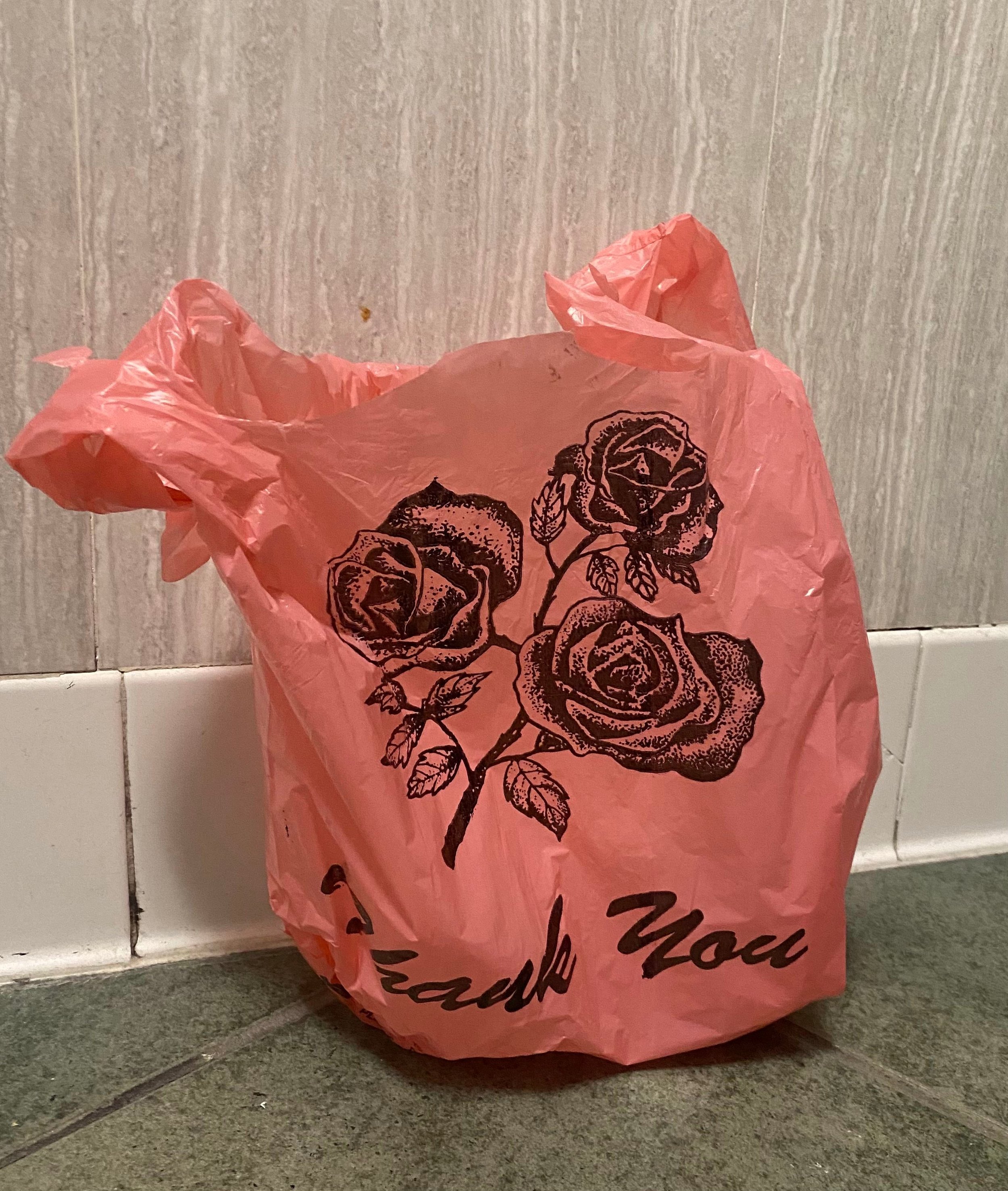Emma Montalbano
When asked the question “What is iconic?" I reflected on the need for something to be visually notable, conceptually complex, and uniquely interesting. This led me to the everyday item, “Reusable” plastic bags.
Reliquiae is made in connection with a series I have been working on titled "Reusable" an exploration of plastic bags, the aesthetically pleasing single-use items. The series connects to the environmental issues surrounding the world we live in today. Single-use items, specifically plastic, have been on the rise for most of my life. We continue to fill our natural resources with trash as the use of these convenience items grows. The bags pictured were collected in just this way, which I came across as they were on their way to being thrown away just after their very first use. As I explore alternative ways to recycle and comment on the impact we are making on the planet, these pieces investigate the irony between something made with single-use at the forefront while hiding behind the veil of reusability.
The piece was realized through collaboration with a Sacramento State Art History class, who commented on the iconography of the image. A note that inspired me and deviated from the common theme of environmental issues was the ascetic nature of the bags. Through the iconic flower, I paid homage to the reflections of my peers.
Source Image:
Art History Student Response to Emma Montalbano:
By Sara Galvan:
I did not expect a plastic bag to ever be considered an “icon”. The associations I have with this icon is using it as a grocery bag, carrying store bought items. It is harmful to the environment if not recycled properly. Ends up contaminating oceans and in landfill. The iconic part about this item is the rose image stamped on the front part of the bag. The article, “Need a bag? A review of public policies on plastic carrier bags - Where, how and to what effect?", explains how versatile the plastic bag has become to our society today. As consumers we are willing to purchase anything that makes our life easier no matter the cost it comes with.
Nielsen, Tobias Dan, Karl Holmberg, and Johannes Stripple. 2019. “Need a Bag? AReview of Public Policies on Plastic Carrier Bags – Where, How and to What Effect?”Waste Management (Elmsford) 87: 428–40.https://doi.org/10.1016/j.wasman.2019.02.025
By Alejandra Ruiz:
The first thing that comes to mind when I see this icon is consumerism. Plastic bags are synonymous with shopping, especially in the United States. What seems iconic about them is that they are present in almost every single big chain grocery store. On second look my icon stands for a more grim environmental reality. Plastic bags are not biodegradable and often end up littering landfills. Plastic bags are directly connected to the global consumer culture. On average a family of four in the United States would have collected approximately one thousand plastic bags.
Battle of the Bag Deconstructing a Consumer Culture Icon / Canadian Broadcasting
Corporation. 2009. New York, N.Y: Infobase.

